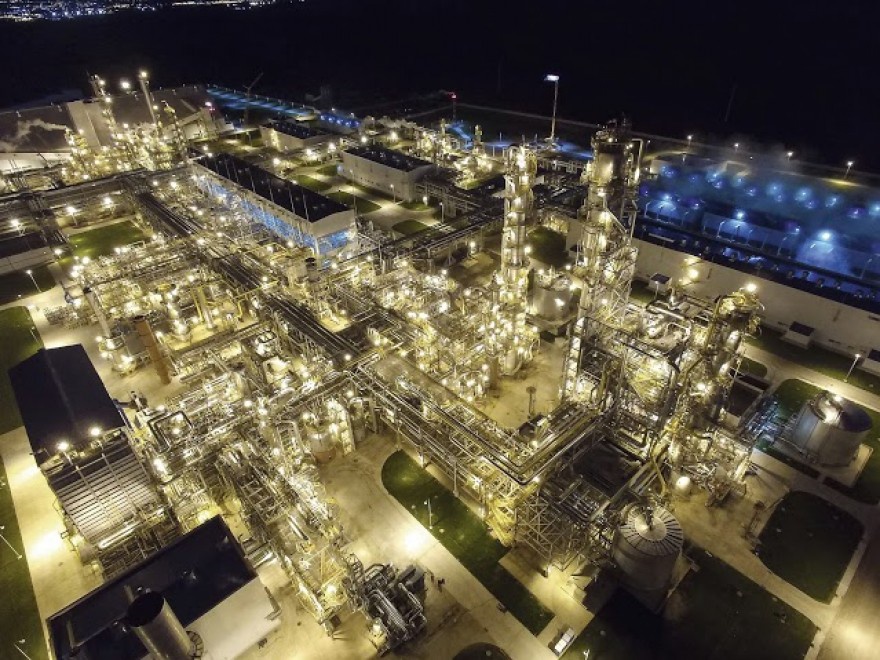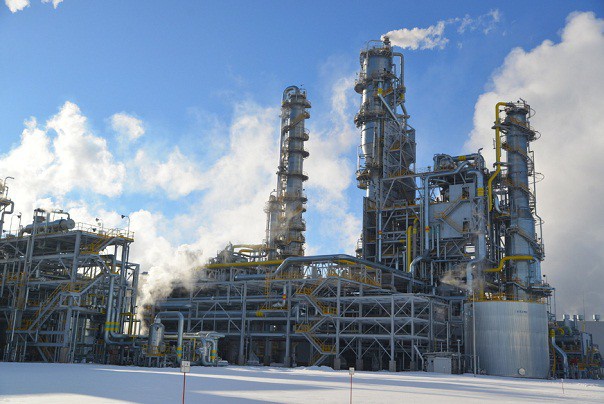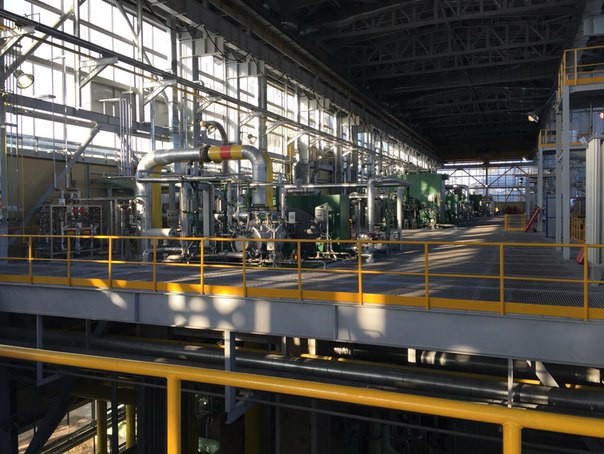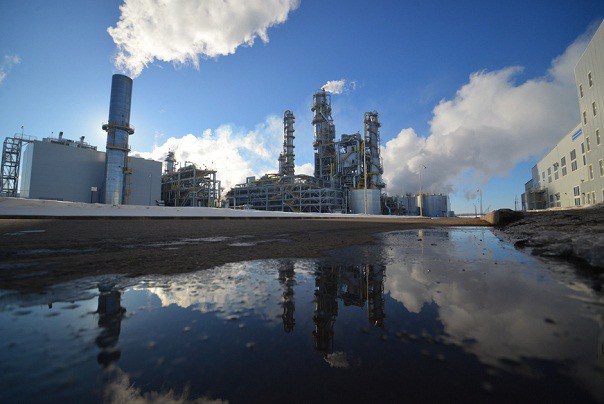This is the third largest production of mineral fertilizers in the world based on one of the leading technologies. Project cost – $ 1.4 billion.
The technology of advanced processing of natural gas up to 94% is in the basis of this plant’s production. The advanced processing of natural gas into ammonia allows to provide low power consumption and high environmental friendliness (96 percent of the emissions will be used in the production). Urea (carbamide) and ammonium nitrate which is produced from ammonia, are used in agriculture as a fertilizer; methanol is used as a raw material in the petrochemical industry.
Production capacity of the plant per year:
717 thousand tons of ammonia, 717 thousand tons of carbamide, 238 thousand tons of methanol, 300 thousand tons of ammonium nitrate.
In total the company has about 500 employees.
Tatarstan has long been waiting for this plant. The former enterprise in the production of fertilizers in Mendeleevsk was half finished from the Soviet era so it was not 100% effective. Raw material – ammonia – was costly, and it had to be imported from other regions. During the crisis of 2008, the plant nearly went bankrupt. On behalf of the government certain bailout measures were applied there. So the plant production managed to restart and many jobs were preserved.
But it was not enough. The market dictates its terms. Therefore, on the basis of the company a modern industrial complex were started to be built, so it could provide with fertilizers for the whole country. The plant is supposed to produce ammonia, methanol, granulated urea and nitrate of ammonia.
This project received state support. JSC “Ammonium” was established. “Vnesheconombank” provided a loan for all constructions. Environmentally friendly and the most efficient technologies in the world from the Danish company HALDOR TOPSOE were chosen for the plant. The plant was built in five years. On February 12, 2016 Chairman of the “Ammonium’s” Board Rinat Khanbikov reported that the plant is ready to start.
“We expect to reach production worth 20 billion rubles a year (currently equivalent to approximately 260 million euro per year – Editor), depending on currency fluctuations. We have to pay back our debts, because the plant was built on borrowed funds, and now we aim for very hard work. The plant’s utilization is on full capacity. But we have yet to sell our product to pay off all our debts. Only after this the whole of our work will be considered as completed,” said Rinat Khanbikov in a conversation with reporters.
Almost all stages of process are automated. The personnel of the plant are operating from the monitoring center.
“Our experts come from all over Russia. For 30 years we didn’t build plants working on such a production; and it is synthesis of gas, specialists who are working in this field are very few. They are, so to speak, custom-made people. We have been searching for them throughout Russia. Of course, we train specialists. Thank God, we are the “petrochemical republic”, we have a lot of universities that train personnel for this industry,” says head of the board of directors.
Danish technology with advanced processing of natural gas into ammonia is very energy efficient and environmentally friendly. CO2 emissions are used in the production of urea and methanol. White smoke that comes from the plant turbine is not a smoke, it is a steam, or hot air. No other emissions present can go into the atmosphere. It is virtually a waste-free production because the entire process is built as a closed-loop production.
“The production of ammonia has a so-called ready-exchanger; the process which cools the gas generates a steam; that steam is sent to work in turbines and the pumps of our plant, so we have the production efficiency. Older plants run only on electricity,” says head of production department Vladimir Shevchenko.
For the construction of the plant a new consortium with foreign companies has been created. Last summer, the first production of ammonia was obtained. The construction involved a total of 3,500 people from different regions of Russia.
“In general 70 out of a 100 of such projects end up two times more expensive, 20-25% – three times more expensive than expected, and I’m not even talking about the missed deadlines, and only 3% will complete the project for the same price and on schedule. “Ammonium” is among these 3%,” said Rinat Khanbikov.
Payback period of the project – 14.5 years, and 5 years are already behind. As for markets, amount of ammonium nitrate is enough to cover the needs for agriculture throughout the country. “Nizhnekamskneftekhim” buys methanol. Granular urea (carbamide) is in little use in Russia, but it is in demand abroad and will be exported. In general, this Tatarstan company is to give 5% of the Russian market of mineral fertilizers, but the prospects are even more promising.
Source: Sdelanounas








Dear Sir,
The production plant of Ammonia and its down stream product looks pretty good specifically the consumption of natural gas to manufacture Ammonia is pretty economical, if the company have surplus product of Urea 46% Nitrogen, we can be helpful to market it in Thailand, Cambodia and Myanmar, the Urea in this region is granular 2-4 mm imported mostly in 1-5 tons jumbo bag, waiting for your reply.
Regards
Syed Farooq
e-mail watercourse2003@yahoo.com
Mob: 66-81-6977300
How do you produce ammonium nitrate.and what additives do you add for it’s stability.